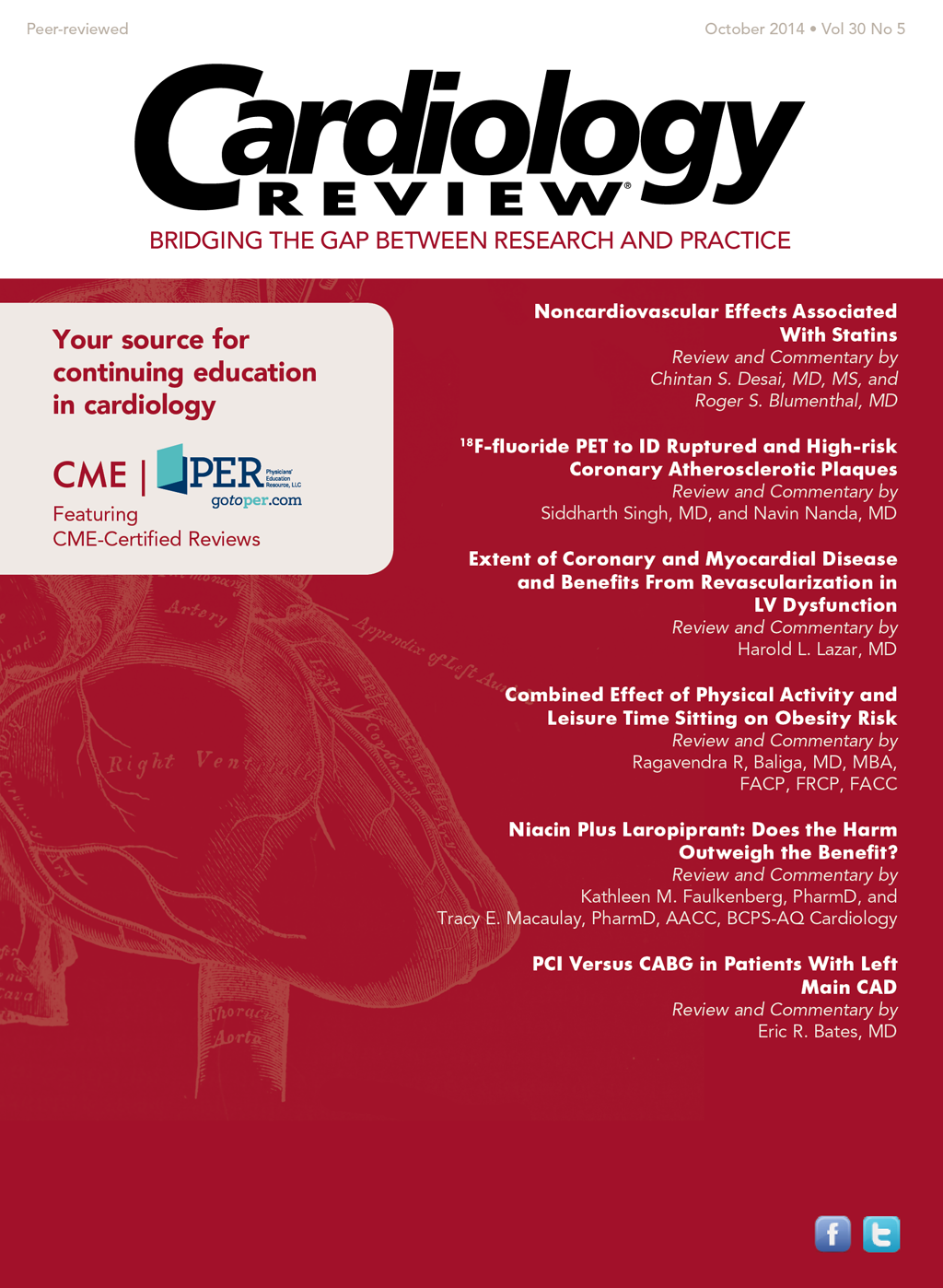Publication
Article
Cardiology Review® Online
Extent of Coronary and Myocardial Disease and Benefits From Revascularization in LV Dysfunction
Author(s):
Does this study raise more questions than it answers?
Review
Panza JA, Velazquez EJ, She L, et al. Extent of coronary and myocardial disease and benefits from surgical revascularization in LV dysfunction. J Am Coll Cardiol. 2014;64:553-561.
Study Design
The STITCH trial sought to determine whether CABG would improve survival in patients with ischemic LV dysfunction compared with patients receiving optimal medical therapy (OMT). After a median follow-up of 56 months, there was no statistically significant difference between the 2 groups.
In this current subgroup analysis, 1212 STITCH patients with 3-vessel CAD, defined as ≥50% stenosis, a baseline left ventricular ejection fraction (LVEF) <27%, and a baseline end-systolic volume index (ESVI) >79 mL/m
2
were studied to determine whether CABG or OMT would result in the best long-term survival. Patients were categorized as having 0 to 1 or 2 to 3 of these prognostic factors. Of these patients, 610 underwent CABG and 602 received OMT. Patients with left main coronary stenosis ≥50%, cardiogenic shock, those who sustained a myocardial infarction (MI) within 3 previous months, or who required an aortic valve replacement, were excluded.
Patients with 2 to 3 factors had a higher incidence of preoperative risk factors, including atrial arrhythmias, previous CABG, moderate to severe mitral regurgitation, more advanced heart failure, and lower EFs, compared with patients with only 0 to 1 prognostic factors. Compared with patients treated with OMT, CABG patients with 2 to 3 prognostic factors had a significant reduction in mortality. This was not observed in patients with 0 to 1 prognostic factors. Although CABG patients with 2 to 3 factors had a higher early (<30 days) mortality rate compared with OMT patients, they had a significant reduction in overall and cardiovascular mortality compared with OMT patients after 2 years of follow-up. This first became apparent at 6 to 15 months following randomization. These results were similar to those of the primary intention-to-treat analysis.
The authors concluded that patients with more extensive CAD and worse LV dysfunction received greater long-term benefit from CABG than patients treated with OMT.






